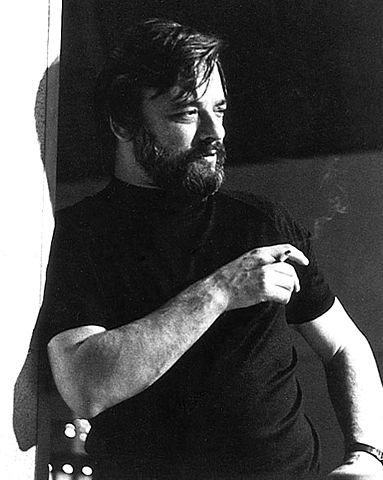Photo: Stephen Sondheim* | Stephen Joshua Sondheim (March 22, 1930 – November 26, 2021) was an American composer and lyricist. Among the most important figures in 20th-century musical theater, Sondheim was praised for having “reinvented the American musical” with shows that tackled “unexpected themes that range far beyond the [genre’s] traditional subjects” with “music and lyrics of unprecedented complexity and sophistication”. His shows addressed “darker, more harrowing elements of the human experience” with songs often tinged with “ambivalence” about various aspects of life.
Sondheim started his theatre career by writing the lyrics for West Side Story (1957) and Gypsy (1959) before becoming a composer and lyricist. Sondheim’s best-known works include A Funny Thing Happened on the Way to the Forum (1962), Company (1970), Follies (1971), A Little Night Music (1973), Sweeney Todd: The Demon Barber of Fleet Street (1979), Merrily We Roll Along (1981), Sunday in the Park with George (1984), and Into the Woods (1987).
Sondheim’s accolades include eight Tony Awards (including a Lifetime Achievement Tony in 2008), an Academy Award, eight Grammy Awards, a Pulitzer Prize, a Laurence Olivier Award, and a 2015 Presidential Medal of Freedom. He has a theater named for him both on Broadway and in the West End of London. Sondheim wrote film music, contributing “Goodbye for Now” for Warren Beatty’s Reds (1981). He wrote five songs for 1990’s Dick Tracy, including “Sooner or Later (I Always Get My Man)”, sung in the film by Madonna, which won the Academy Award for Best Original Song. Film adaptations of Sondheim’s work include West Side Story (1961), Gypsy (1962), A Funny Thing Happened on the Way to the Forum (1966), A Little Night Music (1977), Gypsy (1993), Sweeney Todd: The Demon Barber of Fleet Street (2007), Into the Woods (2014), West Side Story (2021), and Merrily We Roll Along (TBD).
https://en.wikipedia.org/wiki/Stephen_Sondheim
*Autographed publicity photo of Stephen Sondheim. The fact that this is a signed photo given to an apparent fan indicates it was previously used for that purpose. The original photo was 8″ x 10″. See also: film still article for general description of non-copyright status of publicity photos. No copyright information shown on photo.
This work is in the public domain in the United States because it was published in the United States between 1926 and 1977, inclusive, without a copyright notice. For further explanation, see Commons:Hirtle chart as well as a detailed definition of “publication” for public art. Note that it may still be copyrighted in jurisdictions that do not apply the rule of the shorter term for US works (depending on the date of the author’s death), such as Canada (50 p.m.a.), Mainland China (50 p.m.a., not Hong Kong or Macao), Germany (70 p.m.a.), Mexico (100 p.m.a.), Switzerland (70 p.m.a.), and other countries with individual treaties.
December 2, 2021| In Memoriam| Barb Dye

